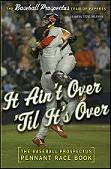This is a continuation of my long and getting longer review of C.S. Lewis' 1947 book Miracles.
Before moving to the third part of the book Lewis digresses in chapter 9 to address a specific objection that troubled him, although one he doubts (and I agree) doesn’t trouble most people. In short, before Lewis converted to Christianity he was repulsed by the idea that Nature was merely something created and not ultimate reality. He felt that as a creature, Nature lost all of its spontaneity and beauty and become just one more utilitarian "thing". However, after becoming a Christian he slowly began to appreciate Nature as a sister to humanity, and one that while fallen just as we are, will one day be redeemed.
In the third part of the book (chapters 10 through 13) Lewis addresses additional arguments against the possibility of miracles but this time from the side of supernaturalism. He begins in perhaps my favorite section of Lewis’ writings by attempting to remove a stumbling block in accepting stories of miracles in the New Testament by tackling the view that those who believe in the God of the Bible and doctrines of Christianity are naively accepting obviously anthropomorphized stories born of a "wholly 'savage' or 'primitive' picture of the universe".
In response Lewis observes that anything that cannot be seen, touched, or heard must always, because of the limitations of spoken and written language and our existence as physical beings, be written "as if they could be seen or touched or heard". Therefore a certain amount of anthropomorphism is necessary to talk about the supernatural if indeed it does exist. He notes that even those who view God not as a trinity of Father, Son, and Holy Spirit but instead as "a great spiritual force" or the more pantheistic notion that everything is a part of God which moves and works through all creation have simply substituted the idea of God as three persons bound in relationship to each other for God as some kind of electrical or magnetic force or an extended gas or fluid. Lewis concludes then that for the modern Christian "the absurdity of the image does not imply absurdity in the doctrines". However, even in the earliest Christian writings it is obvious that more than simple anthropomorphism is being communicated in passages like John 1:1, Colossians 1:17, John 1:4, and Ephesians 1:10. This holds to a degree in the Old Testament as well from Jeremiah 23:24, Ezekiel 1:26, Deuteronomy 4:15, and even Genesis 1:1. Further, this is to be expected if God is truly supernatural in the sense that he is beyond nature and therefore our ability to fully comprehend. Contrary to many evangelicals, however, Lewis does believe that man’s conception of the universe and God have developed over time. He argues that the modern separation of the material from the immaterial was implied all along but that earlier conceptions did not separate the two but instead held to "an ancient unity of meaning which was neither or both". Consequently, this is why modern analysis that posits that man started with a material God or heaven and gradually spiritualized them fail. To the ancient there was no dichotomy and so he did start from one side or the other.
As a result, anyone who lives in an age of more developed abstract thought and understands what "taking it literally" means now sees that immateriality was being spoken of. The modern can then construct a picture of God as "the unconditioned reality" that causes the universe to be, has a positive structure, and entered the universe to become one of the creatures thereby producing effects on the historical level and bringing about a change in mankind’s relationship to the unconditioned reality. However, this modern picture is just as metaphorical as the ancient picture while managing to be duller while not usefully describing God.
Wednesday, February 25, 2004
Miracles, Part IIIa
Posted by
Dan Agonistes
at
10:59 PM
![]()
Subscribe to:
Post Comments (Atom)
125x125_10off+copy.jpg)



No comments:
Post a Comment